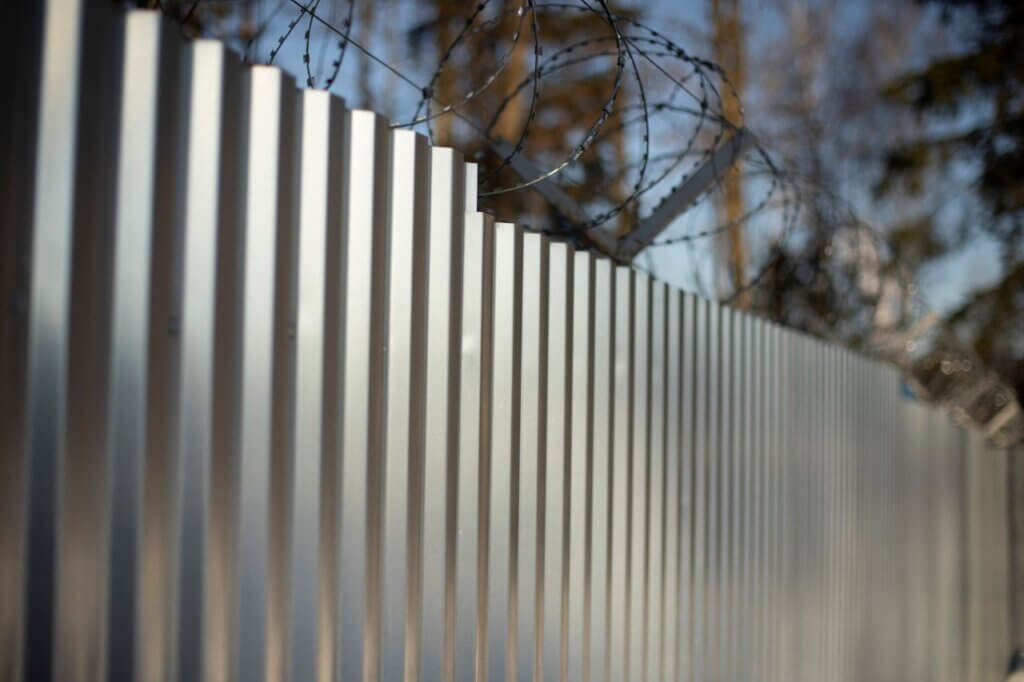How to Protect Composite Decking: Full Guide
Find out how protecting your composite decking can help keep your decking looking its best for years to come. You
Products in Stock
Lowest Prices
Express Delivery
10-Year Warranty
Early June Sale. Up To 15% Off.

When it comes to choosing a fencing material for your property, you may find yourself torn between two popular options: steel and aluminum. Both materials have their own unique strengths and drawbacks, and understanding these differences is key to making an informed decision.
In this post, we’ll take an in-depth look at steel and aluminum fencing, exploring their properties, advantages, and disadvantages. By the end of this article, you’ll have a clearer picture of which material best aligns with your specific needs and preferences. So, let’s dive in and start learning!
To grasp the pros and cons of steel fencing, it’s helpful to first understand what steel is and how it’s used in fencing applications. Steel is an alloy made primarily from iron and carbon, known for its exceptional strength and durability. In fencing, steel is typically galvanised or powder-coated to enhance its resistance to rust and corrosion.
Now, let’s break down the advantages of choosing steel fencing for your property:
However, steel fencing also comes with some potential drawbacks to consider:
Now that we’ve explored steel fencing, let’s turn our attention to aluminum. Aluminum fencing is made from a lightweight, rust-resistant alloy that offers a low-maintenance alternative to steel. It’s available in a wide range of styles, from sleek, modern designs to more traditional, ornate options that mimic the look of wrought iron.
Here are some of the key advantages of choosing aluminum fencing:

However, there are also some potential disadvantages to consider with aluminum fencing:
So, how do you decide between steel and aluminum fencing for your property? The answer depends on your specific needs, priorities, and budget. Here are a few scenarios where each material might be the best choice:
Choosing between steel and aluminum fencing ultimately comes down to understanding your unique property needs and weighing the pros and cons of each material. By taking the time to educate yourself on the characteristics, benefits, and drawbacks of steel and aluminum, you’ll be well-equipped to make a decision that serves your goals and provides lasting value for your home or business.
At Dino Decking, we understand that fencing is just one piece of the puzzle when it comes to creating a beautiful, functional outdoor space. That’s why we offer a range of innovative solutions, like our modern composite fencing, designed to complement your chosen fencing material and elevate your property’s overall aesthetic.
If you’re still unsure about which fencing option is right for you, we invite you to reach out to our knowledgeable team. We’re always happy to answer questions, provide expert guidance, and help you find the perfect fencing solution for your unique needs. Remember, investing in the right fence today can provide years of security, beauty, and peace of mind for your property tomorrow.

Our sample pack contains a sample piece of each colour currently available. Order your free sample pack today to compare the colours and get a true feeling of the Dino Decking range!
Find out how protecting your composite decking can help keep your decking looking its best for years to come. You
It’s quite common to end up with leftover decking after most installation projects. Offcuts and spare boards don’t need to
Business hours
Monday: 09:00 – 17:30
Tuesday: 09:00 – 17:30
Wednesday: 09:00 – 17:30
Thursday: 09:00 – 17:30
Friday: 09:00 – 17:30
Saturday: Closed
Sunday: Closed
Contact us
01942 355968
support@dino.co.uk
Collection Address: Unit 1 Wetheral Close Hindley Ind Estate Wigan Greater Manchester North West WN2 4HS
Pages
Products
Testing
Copyright 2025 Dino Decking Ltd All Rights Reserved.
VAT Number: GB296097848.
Company Number: 10837233.